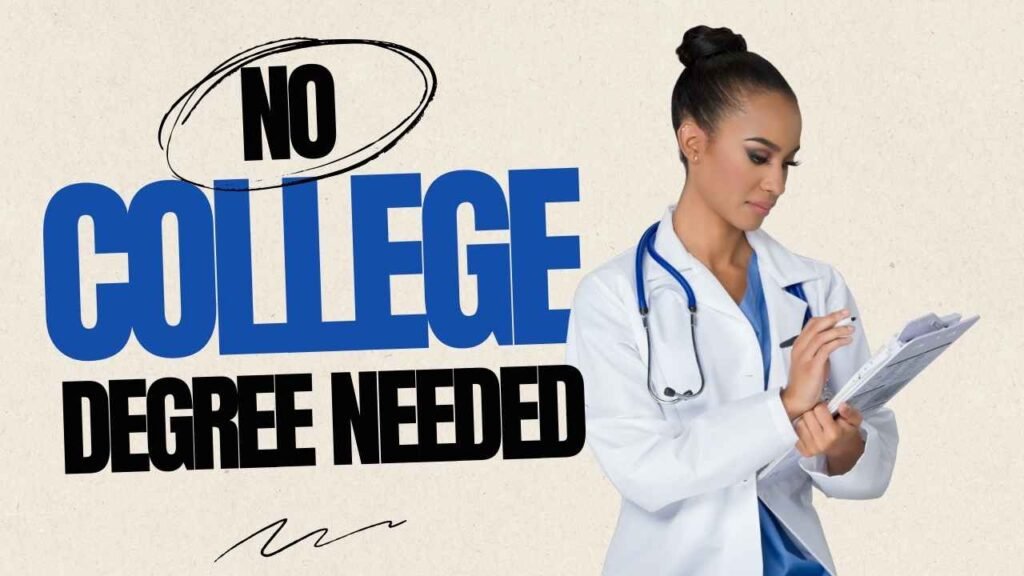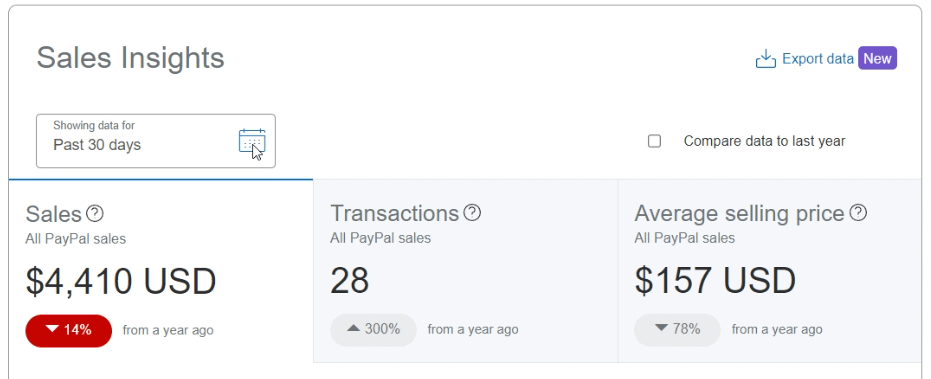AFFILIATE DISCLOSURE
This post may contain affiliate links. An affiliate means Escribr may earn referral fees if you make a purchase through our link without any extra cost to you. It helps to keep this blog afloat. Thanks for your support!
Did you know that by visiting this blog, you are doing good in the world? READ THIS.
Imagine being able to work from home without ever answering a single phone call, dealing with angry customers, or needing a college degree.
Sounds almost too good to be true, right? That’s exactly what draws so many people toward medical transcription. It’s often advertised as this hidden work-from-home gem—steady pay, flexible hours, and a foot in the door of the medical field.
But here’s the part they don’t tell you. Medical transcription isn’t nearly as simple as typing what you hear, and it definitely isn’t the fast track to easy money that some job ads promise. In fact, getting started can feel like navigating a maze of shady offers, confusing training programs, and unclear expectations about pay.
So today, we’re pulling back the curtain on what this career is really like. From where to get legitimate training, to the exact tools you’ll need, how to land actual jobs, and the real numbers on what you can expect to earn—we’re breaking it all down.
Because before you invest your time and money into this path, you deserve to know the truth.
Why Medical Transcription Matters
At first glance, medical transcription might just seem like typing out a doctor’s notes. But in reality, every transcript you create carries serious weight.
These aren’t just casual memos—they become permanent parts of a patient’s medical record. And in the medical world, a single mistake can change everything.
That’s why transcriptionists aren’t just typists. They’re trusted with turning often messy, fast-paced dictations into clear, accurate documents that doctors, nurses, and insurance companies depend on. These files can even be used in court, which makes accuracy non-negotiable.
Now, here’s where a lot of people get tripped up. You’ll see job ads that say things like, “No experience needed, we’ll train you!” But the truth is, most legitimate companies won’t even look at your application without proper training.
This isn’t the kind of work you can just “pick up as you go.” You need to know medical terminology, anatomy, and transcription standards inside and out.
And if you think that sounds intense, well—it is. But it’s also what makes trained transcriptionists valuable. So the real question is: how do you get that training without falling for the wrong program?
Training – What You Actually Need
If you’re serious about medical transcription, training is where it all begins.
And here’s the truth: the shortcuts don’t work. You’ll come across programs that promise certification in just a few weeks, but those are almost always a waste of time—and money.
Why? Because this isn’t about memorizing a few medical words and downloading some software.
Doctors dictate at lightning speed, often using complex terminology mixed with heavy accents or background noise. Without solid training, it’s nearly impossible to keep up.
The good news is, there are legitimate programs designed to prepare you for real-world work. Some of the most respected names include Penn Foster, U.S. Career Institute, and Everett Community College’s certificate program.
These usually take four to eight months to complete, and the best ones give you practice with real dictation files, medical terminology, and even career support once you graduate.
Think of it like this: proper training is your ticket in the door. Without it, you’ll constantly be overlooked. With it, you’ll be able to pass the proficiency tests most companies require before hiring.
And once you’ve got the skills, the next step is just as important: making sure you’re equipped with the right tools to do the job.
The Tools of the Trade
Once you’ve got the training, the next piece of the puzzle is having the right setup. Medical transcription isn’t something you can just do on a basic laptop with earbuds—it requires a few key tools to work efficiently.
First, you’ll need a reliable computer with a strong internet connection. Since most transcription work is done online, a spotty connection can slow you down and directly cut into your pay.
Second, transcription software. Some companies will provide this for you, while others expect you to have your own.
Alongside that, almost every professional transcriptionist uses a foot pedal—the Infinity USB pedal is one of the most popular. It lets you control audio playback with your feet, which means your hands never have to leave the keyboard. That one tool alone can double your speed.
Third, invest in a pair of quality headphones. You’ll often be dealing with muffled recordings, background noise, or fast talkers, so clear audio is a must.
And finally, make sure you have word processing software, usually Microsoft Word, plus a few medical reference materials—digital or physical—that you can lean on when the terminology gets tough.
The setup doesn’t have to be expensive, but without it, you’ll constantly find yourself frustrated or falling behind.
And once you’re ready with training and tools, the next big question is: where do you actually find legitimate jobs?
Landing Real Jobs
So you’ve got the training, you’ve got the tools—now comes the hardest part: actually finding legitimate work. This is where a lot of people either give up or get scammed, because the job market can be tricky to navigate.
The most reliable places to start are job boards like Indeed, FlexJobs, LinkedIn, and MTStars. Many medical transcription companies post openings there, but don’t expect to land a position just by submitting a résumé.
Most employers will test you first—sometimes with tough audio clips filled with medical jargon, background noise, and fast talkers. Pass that test, and you’re in the running. Fail it, and you’re back to square one.
Here’s another thing to know: most of these jobs aren’t traditional employee roles. They’re usually contractor positions. That means no health insurance, no retirement plan, and no paid time off. Instead, you’re paid based on your output—usually per line of text or per audio minute.
At first, this might sound flexible and even freeing. But the reality of contractor work is a little more complicated—and that’s where a lot of newcomers get caught off guard.
The Reality of Being an Independent Contractor
On paper, being an independent contractor sounds ideal. You set your own hours, you work from home, and you don’t have a boss breathing down your neck. But the reality is a little less glamorous.
First, no benefits. That means no paid sick days, no health insurance, and no company retirement plan. You’re responsible for everything yourself, including taxes. And if you’ve never filed as self-employed before, that can be a rude awakening.
Second, the pay structure is very different from what most people expect. You’re usually paid per line of transcription or per audio minute, not per hour.
And here’s the kicker: one “audio minute” can easily take three to five actual minutes to transcribe, depending on the difficulty of the recording. So if you’re not fast and accurate, your hourly rate can sink fast.
That’s why speed and precision are everything in this field. A skilled transcriptionist can make decent money, but beginners often find themselves working long hours for surprisingly little pay.
And that leads to the big question everyone wants answered: how much can you really make doing this?
Pros and Cons of the Job
Like any work-from-home career, medical transcription comes with both perks and pitfalls. Let’s start with the positives.
The biggest advantage is flexibility. You’re not tied to phone calls, you don’t have to deal with customer service, and as long as you meet your deadlines, you can usually set your own schedule.
For introverts, this is one of the few remote jobs where you can work in total quiet without constant interaction.
Plus, you don’t need a degree, which makes it far more accessible than many healthcare careers. And if you stick with it, there’s room to move up into editing or quality assurance roles.
But on the flip side, the downsides are real. The work can get repetitive fast. You might find yourself typing the same kinds of reports day after day, with little variation. Pay is inconsistent, especially when you’re starting out, and deadlines can be brutal.
On top of that, medical terminology is no joke—it takes time to master, and even seasoned transcriptionists run into unfamiliar terms.
So while the freedom and independence are appealing, it’s not a perfect fit for everyone. And that brings us to the part you’ve probably been waiting for: the truth about pay.
Pay Expectations
So, how much can you actually earn as a medical transcriptionist? The answer isn’t as straightforward as you might hope.
According to reports from sites like PayScale and Indeed, the average rate sits around $15 to $18 an hour.
But here’s the catch—your actual pay depends heavily on your speed, accuracy, and the company’s policies. Some companies pay by the line, others by the audio minute, and very few offer hourly wages.
For beginners, the reality can be tough. Many new transcriptionists report earning below minimum wage when they first start out, simply because they’re still building speed and efficiency.
On the other hand, experienced transcriptionists who type fast and know the terminology can climb past $20 an hour or more.
There’s also a big difference between straight transcription and editing voice recognition files. Editing usually pays less per line, but since the text is already generated, it can be quicker to get through.
The bottom line? This isn’t a “get rich quick” career. If you see a job ad promising sky-high pay with little work, that’s almost always a red flag.
Medical transcription is a skill-based field, and like any skill, it takes time to sharpen before the income becomes steady.
So with all of that in mind, is medical transcription still worth pursuing in 2025?
Wrap-Up
Medical transcription isn’t the hidden goldmine it might have been years ago, but that doesn’t mean it’s irrelevant today. For people who are detail-oriented, self-motivated, and prefer quiet, independent work, it can still be a solid career path. The key is going in with clear expectations.
With the right training, the proper tools, and a willingness to practice, you can carve out a dependable work-from-home role. Just don’t fall for shortcuts or inflated promises. Success in this field comes from building real skills, not from jumping into the first job listing that claims you’ll earn easy money.
So if you’re considering this path, treat it like an investment. Take the time to train properly, get set up with the right equipment, and start applying strategically. Over time, your speed and accuracy will grow—and so will your income.
At the end of the day, medical transcription isn’t for everyone, but for the right person, it’s a chance to work from home, avoid phones and endless meetings, and still contribute to an essential part of healthcare.
And if you want to take the first step, check out some of the training programs we mentioned earlier—or explore resources that post legitimate job leads. Because if you’re serious about it, the opportunity is out there—you just need to be prepared to grab it.












